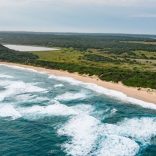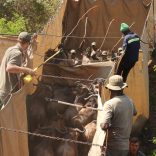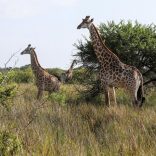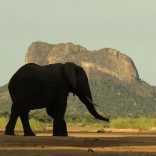Mozambique urges collaboration to ensure lasting marine landscape conservation
Mozambique: Deforestation rate 220K ha/year, accounting for 80% of gas emissions

FILE - Illustrative photo. A truck loaded with logs leaving Guro, Manica central province. [File photo: DW]
Mozambique’s forests, which cover over half of its land area, are disappearing at a rate of 220,000 hectares per year and deforestation accounts for 80 percent of the country’s gas emissions, warns a report released on Friday.
Entitled “Africa Green Growth Readiness Assessment“, the joint study of the African Development Bank Group (AfDB) and the Global Green Growth Institute (GGIV) takes an in-depth look at the state of readiness for green growth in seven countries – Gabon, Morocco, Mozambique, Kenya, Rwanda, Senegal and Tunisia.
Launched on Wednesday during a side-event at the 15th session of the Conference of the Parties (COP15) of the United Nations Convention to Combat Desertification, being held in Abidjan from 9 to 20 May, the study released on Friday in an AfDB statement, concludes that in Mozambique the crucial intervention for green growth is in combating desertification.
Citing recent data from the Mozambican government, the study’s authors write that over half of Mozambique’s land area (40.6 million hectares) is covered by forests.
“However, this crucial resource is shrinking at an alarming rate: approximately 220,000 hectares of forest disappear every year. At this rate of deforestation, greenhouse gas emissions from deforestation represent 80% of Mozambique’s total emissions,” they warn.
According to the experts, deforestation in Mozambique is caused by the expansion of commercial agriculture, itinerant agriculture practices, wood extraction, firewood and charcoal production, urban expansion, mining and livestock.
Shifting agriculture (slash and burn agriculture, which often results in the uncontrolled spread of fires) was the main cause of 65% of deforestation in Mozambique between 2000 and 2012.
Recalling that Mozambican families use forest resources for 85% of their energy needs and that only 5.7% of the rural population has access to electricity, the authors of the study conclude that deforestation and agricultural degradation have become serious concerns for the country’s authorities.
ALSO READ: Mozambique: REDD+ project to protect Inhambane forests
In this sense, they recall that Mozambique has adopted a REDD+ strategy (Reducing Emissions from Deforestation and Forest Degradation), and has developed several initiatives and regulatory measures, including a new regulation for the timber industry that protects some tree species, Given the crucial role of the forest sector in Mozambique, stress the experts, the REDD+ strategy and the forest investment plan created by the government, are considered essential in the national plan to reduce climate change and to achieve a resilient green growth.
The authors of the report also recall that on February 1, 2019, Mozambique signed an agreement with the World Bank through which it receives payments of up to $50 million (48 million euros) for successfully reducing emissions of polluting gases and deforestation.
To read / download the full Africa Green Growth Readiness Assessment report, please click HERE.
Are African countries prepared to safeguard natural resources for future generations? A new study by the African Development Bank and the @gggi_hq says, “YES!” when it comes to political support for #greengrowth. https://t.co/JHiJeBX0aw #UNCCDCOP15 pic.twitter.com/wuomfOAUl0
— African Development Bank Group (@AfDB_Group) May 13, 2022












Leave a Reply
Be the First to Comment!
You must be logged in to post a comment.
You must be logged in to post a comment.